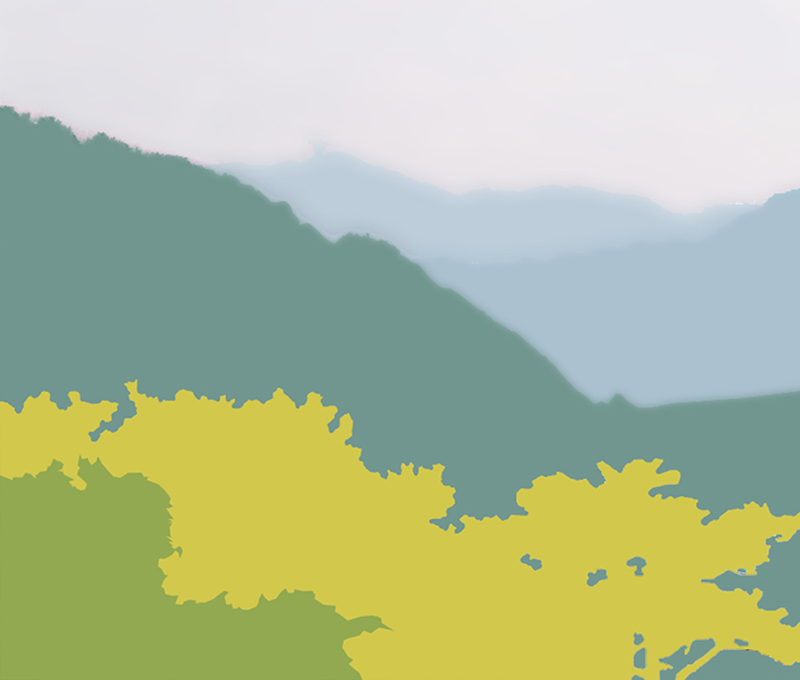Aerial Perspective
空気遠近法
Kuuki-enkinhou
CATEGORIES
Aerial perspective is a method of spatial expression which uses the properties of the atmosphere. For example, when looking at a landscape outside, objects that are further away will appear bluish and hazy with less distinct contours.
Taking these characteristics into consideration, with aerial perspective, the background is drawn in less distinct shapes with hues that are closer to the color of the atmosphere, depending on the distance, to create an impression of depth. Specifically, when drawing a landscape of thickly forested mountains on a fine day, mountains that are close by will be drawn in deep green whereas those farther away will be drawn with a greater proportion of blue, gradually adjusting the tone so that it becomes closer to the bright tone of the sky. The outlines of the mountains will also fade, the farther away they are, blending in with the atmosphere.
Leonardo da Vinci is known to have studied this technique with keen interest during the Renaissance period. Back in those days, linear perspective, the technique of expressing depth using lines that converge to a vanishing point and drawing distant objects smaller, already existed. However, Leonardo realized that linear effects were not fully capable of conveying distance when depicting outside scenery on a flat surface and that there was also a need to rely on the effects of coloring. Although people had tested various methods of coloring before that time, it was only then that the technique of aerial perspective was properly established.

 Aerial Perspective
Aerial Perspective
